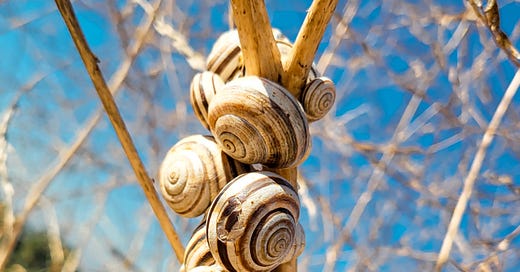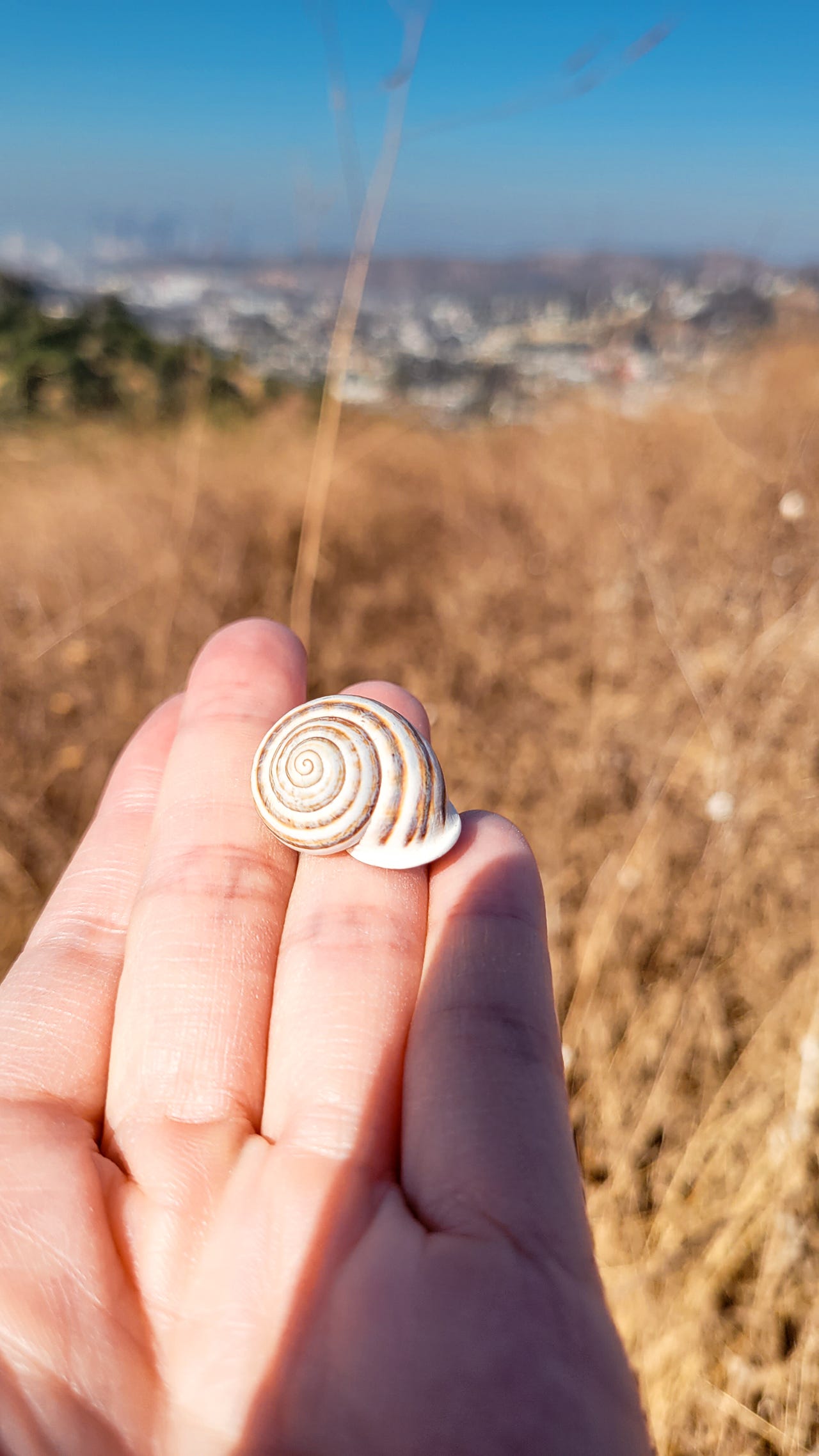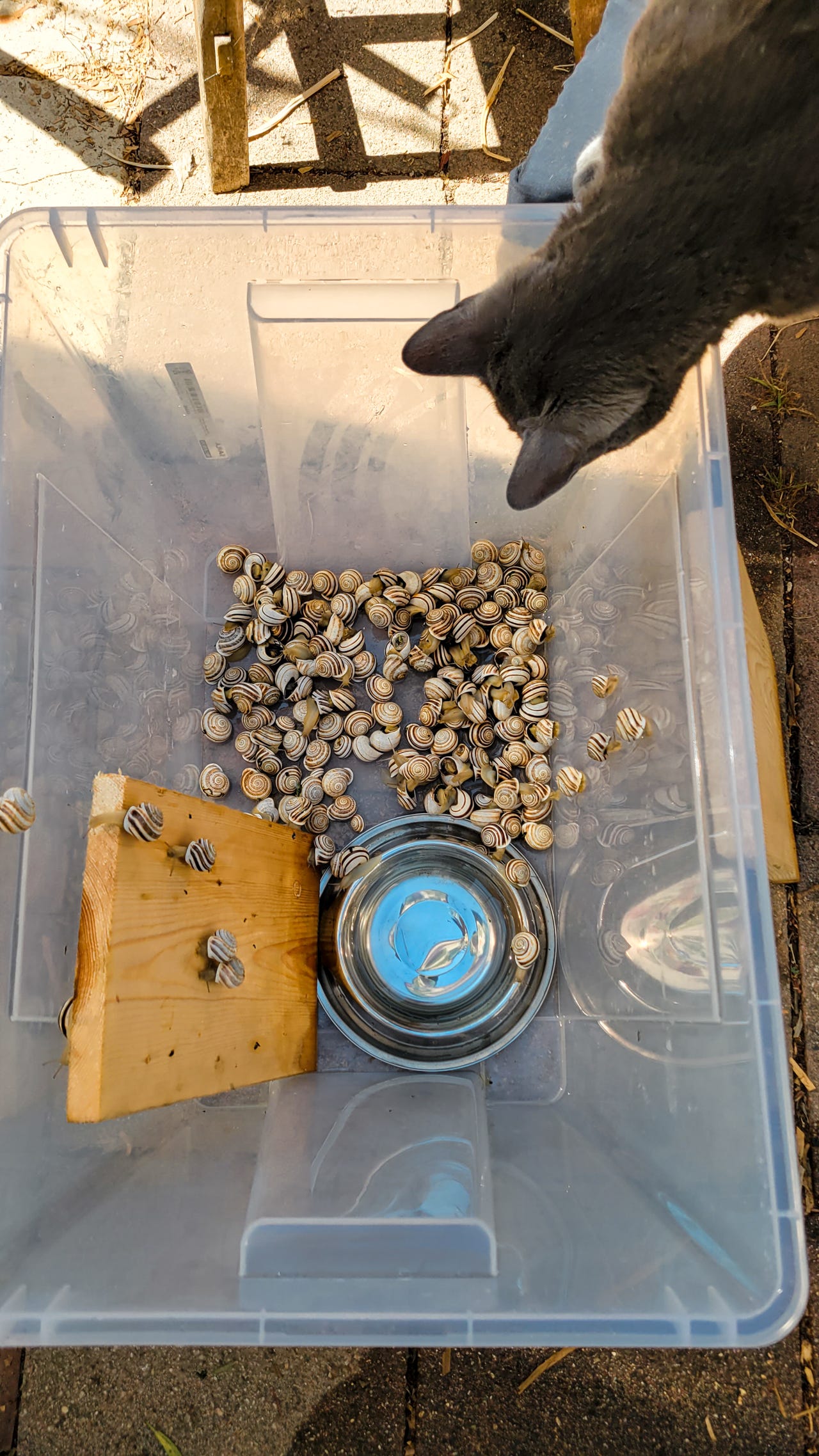I went hiking at a nearby park and spotted hundreds of chocolate and vanilla-swirled snail shells clinging to dried wild fennel stalks like nature’s lollipops sticking straight up towards the sky. Fragrant memories of garlic butter-doused escargot danced in my mind as I pulled out my phone and searched:
Oh, I’m gonna cook and eat these snails. I also have the perfect cannabis strain to pair with them.
Natty Bumppo by Rebel Grown is a limited-release cannabis strain that piqued my curiosity for its unconventional aromas described as “rotting fruit with tang, mixed with putrid body odor and loud gas fuel.” Mmmm, yum. The strangely stanky strain pairs perfectly with this story and recipe to match the unexpected revelations of this escargot escapade.
Buckle up and take a nice long toke. This is the delicious, slimy, icky truth about snail cuisine – from park to plate.
In this Issue:
Foraging: Milk Snails in the Wild
Detoxing: Snail Farming
Processing: The Horrible Icky Bits
Cooking: Poor Unfortunate Souls
Strain Review: Natty Bumppo, a Strangely Stanky Strain
Recipe: Escargot Pasta
“My mission in life is to make snail lovers of all of you.”
– Julia Child on PBS “The French Chef” Season 4
Foraging: Milk Snails in the Wild
“Bon appetit!” Julia Child’s voice rang in my head as I happily plucked the largest swirled snail shells and placed them gently in my bucket. It’s the hot, dry summer season when milk snails climb high, seal themselves in their shells, and go into a state of estivation (snail hibernation) until the next rainy season. Easy to catch free food!
Milk snails, otala lactea, are large, edible land snails that originated from the Mediterranean and northern Africa and can live up to 20 years. Snails are one of the most nutritious meats high in protein, iron, calcium, and vitamin A. Here in Southern California, they are an invasive pest that puts native snails and plants at risk, therefore the only logical thing to do is eat them.
Things to consider when foraging wild snails
Size: Pick the biggest snails that are close to 1½ inches across. It’s so much work for a tiny morsel of food, take the biggest ones because they’ll be easier to pull out of their shells.
Type of Snail: Most common varieties of snails are edible. Identify and verify the species using the Seek by iNaturalist app.
Environment: Consider where you found these snails and whether they are relatively healthy. I found my snails at my local park and hiking trail where it’s unlikely that chemicals or pesticides were sprayed. They’re clinging to wild fennel in a protected park where they’re not exposed to synthetic fertilizers, poisons, or rat poop.
Time: Do you have 1-2 weeks to care for the snails as they detox? And 5+ hours to prepare and process the snails before cooking?
FAQ: What about parasites? Will you get sick?
Do NOT eat raw snails.
Snails are safe to eat once cooked above 165 degrees F for several minutes.
There’s always a possible risk when ingesting anything, even your salad greens and vegetables, and a parasite called rat lungworm is the most concerning.
Wash your hands after handling snails.
Cook thoroughly before eating.
FOR PAID SUBSCRIBERS
Detoxing: Snail Farming
Before cooking and eating them, I detoxed and pampered the little gastropods like the Wagyu beef of snails. They were transferred into a snail habitat (a clear plastic tub with a mesh screen on top so they can’t escape) for the next couple of weeks where they will rehydrate, detox, and fatten themselves up on a diet of organic greens, fresh fruit, and milk. Yes, snails love milk and it makes them nice and fat. They also like to eat sweet potatoes and lettuce, which turns their poop bright colors.
Keep reading… more on poop below.
Keep reading with a 7-day free trial
Subscribe to Fruit+Flower Unfurled to keep reading this post and get 7 days of free access to the full post archives.








